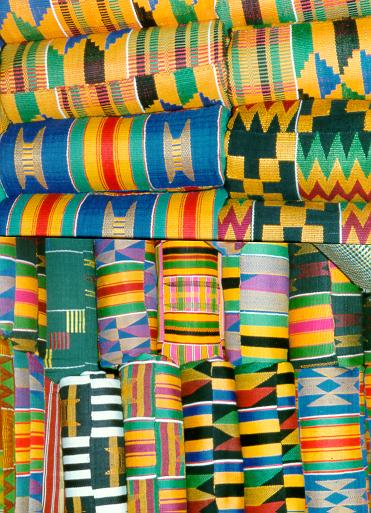Kente Cloth: A Cultural Tapestry of Color and meaning
Introduction
Table of Contents
Kente cloth, an iconic textile from Ghana, is a cultural masterpiece renowned for its vibrant colors, intricate patterns, and deep-rooted significance. This traditional fabric, woven by the skilled hands of Ashanti artisans, has captivated the world with its rich history and enduring beauty.
Origins and History
Kente cloth originated in the 17th century among the Ashanti people of Ghana. It was initially used as ceremonial attire for royalty and spiritual leaders. The intricate patterns and colors held symbolic meanings, conveying messages about the wearer’s status, achievements, and beliefs.Over time, Kente became an indispensable part of Ghanaian cultural identity, worn for special occasions and as a symbol of national pride.
Weaving Techniques
Kente cloth is created using a specialized weaving technique known as strip weaving.Narrow strips of cotton or silk are woven on a loom, and then sewn together to form larger pieces.The patterns are created by alternating the colors and textures of the strips, resulting in a kaleidoscope of designs. The weaving process is labor-intensive and requires years of experience and mastery.
Pattern Interpretation
Each Kente cloth pattern holds a unique meaning and story. Some common patterns include:
- Adinkrahene: The king’s scepter, representing power and authority.
- Nkyinkyim: A twisted rope, symbolizing unity and interdependence.
- Funtunfunefu Denkyemfune: Spirals resembling a snail’s shell,representing growth and prosperity.
li>Obaapa Mmirika: A woman carrying a baby on her back, signifying motherhood and strength.
Cultural Significance
kente cloth holds immense cultural significance for the Ashanti people and has become a symbol of Ghana’s rich heritage. It is worn during meaningful events such as festivals, weddings, and funerals. Each pattern holds a specific meaning,conveying messages about the wearer’s history,status,and values.
Global Influence
In recent decades, Kente cloth has gained widespread popularity beyond Ghana.It has been incorporated into fashion and art by designers around the world. Its vibrant colors and intricate patterns have captured the imagination of people from all walks of life,inspiring contemporary interpretations and appreciation for traditional African craftsmanship.
Case Studies
* The Kente Cloth at the Smithsonian: In 2018, the Smithsonian National Museum of African American History and culture acquired a collection of over 50 Kente cloths. These pieces showcased the diversity and cultural importance of Ghanaian textiles.
* Kente Fashion Week: The annual Kente Fashion Week in Ghana celebrates the creativity of designers who use Kente cloth in their collections. It has become a platform for promoting African fashion and connecting artisans with global markets.
First-Hand Experience
“Wearing Kente cloth fills me with a sense of pride and connection to my ancestors,” said Ama, a Ghanaian cultural activist. “It’s not just a fabric; it’s a representation of our history, culture, and aspirations.”
Practical Tips
* Care instructions: Kente cloth is delicate and should be dry-cleaned or washed by hand.
* Cultural etiquette: When wearing Kente cloth, it’s important to respect the cultural significance and avoid using the fabric in inappropriate or disrespectful ways.
* Appreciation and support: Supporting artisans and purchasing authentic Kente cloth helps preserve the cultural heritage and livelihoods of the skilled weavers who create it.
conclusion
Kente cloth is a living testament to the creativity, ingenuity, and cultural richness of the Ashanti people. Its vibrant colors, intricate patterns, and deep-rooted significance have made it a symbol of Ghana’s heritage and a source of inspiration worldwide. Through its enduring beauty and cultural relevance, Kente cloth continues to captivate people’s hearts and minds, connecting the past to the present and celebrating the vibrant spirit of Africa.

